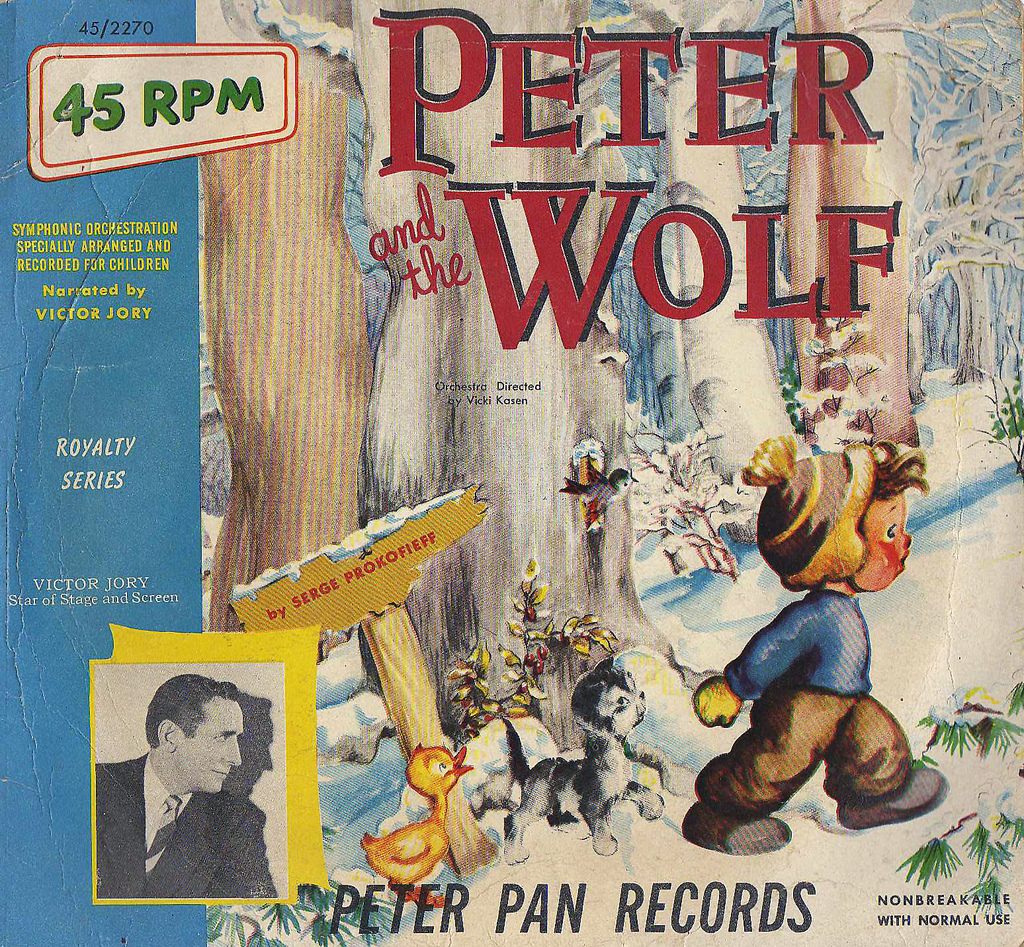What's The Best Version of 'Peter and the Wolf'?
How about the scariest?

Image: Ted Van Pelt via Flickr
If you watched (and were underwhelmed by) this most recent season of FX’s Fargo, you might remember the odd and incredibly on-the-nose opening to the fourth episode. Each of the show’s characters was introduced with their animal and instrumental parallel from Prokofiev’s Peter and the Wolf, an orchestral piece for children. It’s a morality tale—a fable—and it kind of gives away how the whole season is going to go. Even if you have no familiarity with Prokofiev at all, if you’ve spent this past month scratching your head trying to place him in classical canon, I have to imagine you’re familiar with Peter and the Wolf. It’s everywhere.
As I wrote last week, Prokofiev spent the final third of his career back in Russia, struggling to assimilate to Soviet culture. In the winter of 1936, the composer was drawn to the Moscow Children’s Musical Theater where his wife and two sons had started to go see productions directed by a woman named Natalia Satz. Satz was convinced Prokofiev would think nothing of their productions—which I think has more to do with the idea that Prokofiev was kind of a dick and less to do with thinking everything you make is bad—but it was truly the opposite. His eternal love for fairy tales drew him back to the theater again and again with his family. Eventually, Satz approached Prokofiev about a collaboration. She initially hired a poet named Nina Saksonskaya to write the text for the children’s piece, but Prokofiev immediately disliked what Saksonskaya did so he rewrote the whole thing himself. Then he composed the music in nine days.
The story of Peter and the Wolf is almost too simplistic to explain—and you honestly have time to hear it for yourself—but in case you are lazy and bad: Peter is a young boy who goes outside to hang out with his friend who is a bird and also there’s a cat and a duck. Everyone’s having a grand old time, even though Peter’s grandfather was like, “you don’t know if there’s gonna be a wolf outside,” which, good point. Eventually—get this—a wolf comes. The wolf eats the duck, but Peter and the bird and cat manage to trick the wolf, lasso it, and then they, along with some hunters, march it to the zoo. The moral is, uh, a little shaky. Something of a cross between “take risks” and “don’t listen to old people” which is vaguely socialist if you think about it in terms of old people meaning “the czar.” Peter is also a Pioneer, which was like the Soviet version of Boy Scouts.
Now, for whatever reason, I didn’t grow up with Peter and the Wolf—maybe it’s time to interview my parents again—but a lot of other people I know did. My girlfriend knew the Disney version growing up. A lot of my peers seemed to have heard some version of it in school. I first heard it at a concert at Ravinia, an outdoors pavillion in the suburbs of Chicago. If I had to pick a preferred version, or at least, if I had to pick one to listen to while I write this column, it’s gotta be the David Bowie-narrated one.
But the version I’m most obsessed with these days was presented to me by a comedian and friend of mine, Luke Taylor. At a show we did together, Luke did a presentation on this, uh, extremely terrifying puppet version of Peter and the Wolf conducted by Claudio Abbado and featuring freaking STING as the narrator. This version also starts with a version of Prokofiev going to see Peter and the Wolf which, um, okay??? And the hunters are supposed to sort of be the Marx brothers???????????? This is 100% the kind of thing no child should have seen and yet it seems many, many children probably did. If you have the time in the middle of your day to watch a very scary video, please do. You’ve earned it.
